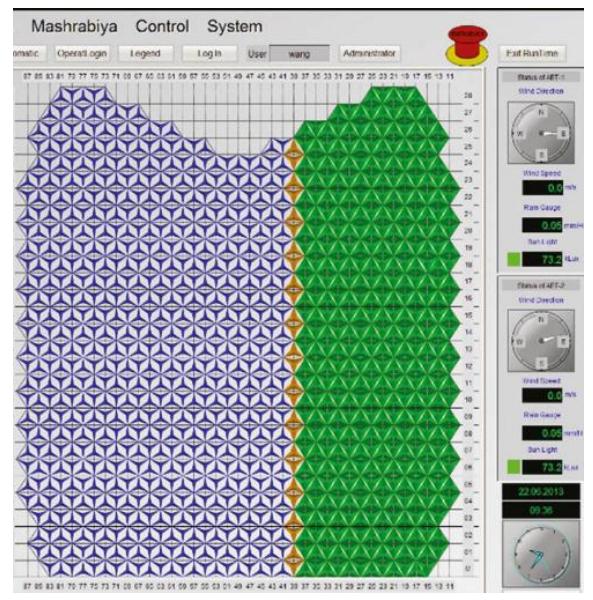Kinetic Buildings in Climate-Responsive Architecture
2022, IRJET
Abstract
Climate-responsive architecture integrates the use of the climate data of an area, to construct efficient buildings that responds to, and works with the local climate, the scope of which includes, but is not limited to temperature, historical weather patterns, sun path and solar position, environmental conditions, seasonality, topography, etc. The design aims to minimize extreme energy use, have reduced impact on the natural environment, and above all, promote sustainability. Kinetic architecture responds to this need of intelligent, interactive, and adaptive architecture by including moving parts which are allowed to operate independently without compromising the structural integrity. Although this concept has been in use since the Middle Ages, an example being the drawbridge, increasing need for smarter use of energy has, in the late 20th century facilitated the use of moving parts in significant portions of the superstructure. Advancements in mechanics, electronics and robotics, fuelled by concepts such as Fuller's Tensegrity has brought into effect functional buildings that allow for these types of movements. This paper explores the use of kinetic buildings in climateresponsive architecture, of which there are few examples, including buildings that use kinetic facades to regulate the entry of sunlight, to prefabricated skyscrapers with rotating floors. Although the concept is in use, it is not as commonly used as it should be to respond and adapt to the drastically changing climatic conditions.
FAQs
AI
What are the primary advantages of employing kinetic architecture in buildings?
Kinetic architecture enhances space utilization, achieving a shorter ROI cycle, and significantly improving guest experience by creating adaptable environments. Examples include the retractable roof of the Mercedes-Benz Stadium, which demonstrates heightened functional versatility.
How do kinetic facades contribute to environmental sustainability?
Kinetic facades optimize solar exposure, reducing energy consumption by limiting solar gain to 400 watts per linear meter. The automated shading at Al Bahr Towers results in a reduction of approximately 1,750 tonnes of CO2 emissions annually.
What are the classifications of kinetic structures based on their mobility?
Kinetic structures can be classified into embedded, deployable, and dynamic types, each with distinct characteristics. For example, dynamic structures can rotate independently, accommodating user requirements while enhancing spatial efficiency.
How do kinetic elements in architecture adapt to environmental changes?
Kinetic elements utilize motors or natural forces to modify building shapes in response to external conditions, such as air movement or sunlight. The Sharifi-Ha House in Tehran showcases swiveling rooms that adapt to seasonal temperature fluctuations.
What technologies facilitate the movement in kinetic architecture?
Mechanisms such as pneumatic, mechanical, or sensor-driven systems are employed for responsive motion in kinetic architecture. The Shed in New York utilizes a telescoping shell activated by gantry crane technology, allowing versatile spatial transformations.
References (7)
- REFERENCES
- A. M. Elkhateeb, M. A. Fikry and A. A. Mansour, "Dynamic Building and its impact on Sustainable Development," Alexandria Engineering Journal, vol. 57, no. 4, Dec. 2018, pp. 4145 -4155, doi:10.1016/j.aej.2018.10.016.
- M. Beyrami and H. Z. Alibaba, "The Relation of Sustainable Architecture with Dynamic Structure in High-rise Buildings," International Journal of Recent Engineering Research and Development (IJRERD), vol. 1, no. 8, pp. 16 -21.
- M. Barozzi, J. Lienhard, A. Zanelli and C. Monticelli, "The Sustainability of Adaptive Envelopes: Developments of Kinetic Architecture," Procedia vol. 155, 2016, pp. 275 -284.
- Z. Razaz, "Sustainable Vision of Kinetic Architecture," Journal of Building Appraisal, vol. 5, no. 4, 2010, pp. 341 -356.
- A. Crespo, "Conceptual Design of a Building with Movable Parts," Master's Thesis, Massachusetts Institute of Technology, 2007.
- R. Fortmeyer and C. D. Linn, "Kinetic Architecture - Design for Active Envelopes," Images Publishing, pp. 176 -183, 214 -219.
 IRJET Journal
IRJET Journal























